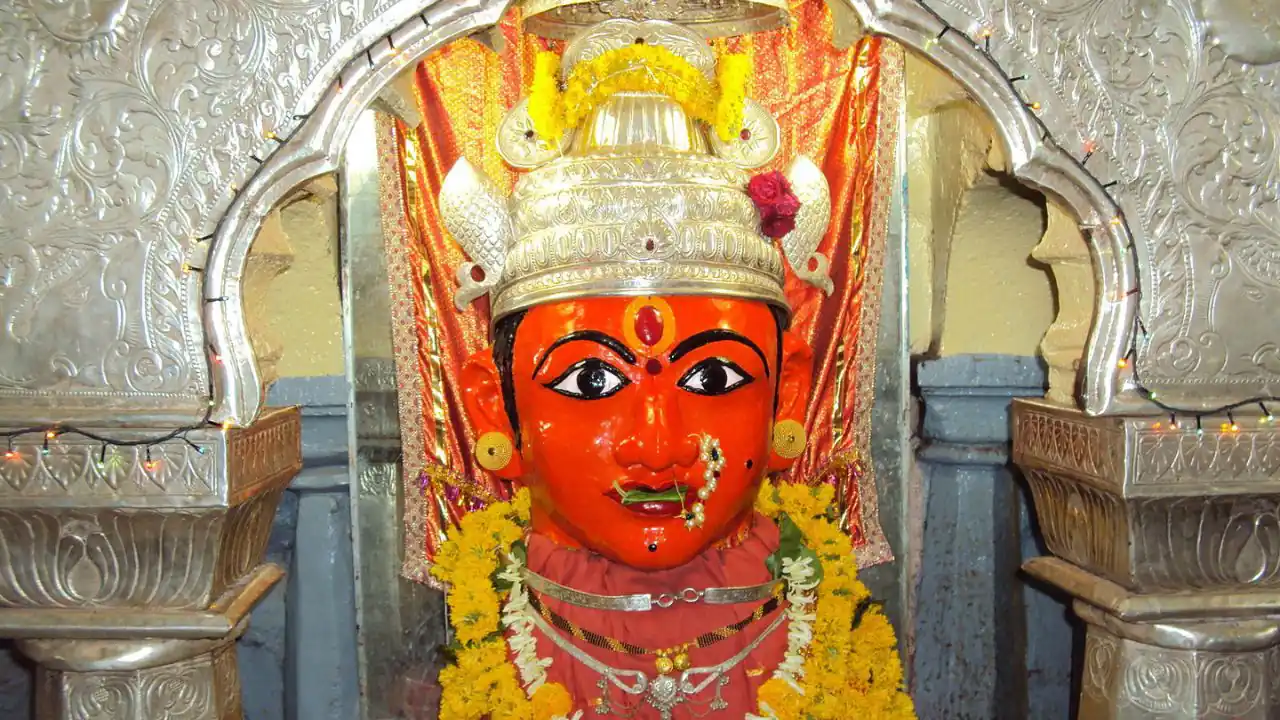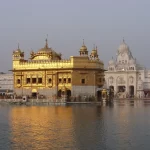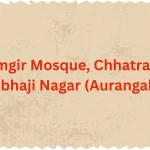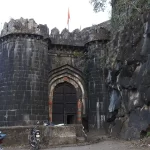🕉️ Renuka Mata Temple – Chandwad, Nashik District, Maharashtra
Ready to experience spiritual serenity? Share this guide or plan your trip to Chandwad’s Renuka Mata Temple now!
Where Legends Meet Devotion: The Eternal Charm of Chandwad’s Renuka Mata Temple 🛕
|| कुलस्वामिनी रेणुका माता कि जय ||
“A Sacred Abode Where Myth, History, and Nature Converge”
🔴 Brief Introduction:
Nestled in the verdant hills of Nashik district, the Renuka Mata Temple 🛕 in Chandwad is more than a pilgrimage site—it’s a living tapestry of mythology, royal legacy, and architectural brilliance. Revered as a Shakti Peeth, this temple holds the sacred head of Goddess Renuka, mother of Parashurama, and stands as a testament to Maharashtra’s spiritual heritage. In this comprehensive guide, we unravel the temple’s mystical legends, delve into its Maratha-era architecture, and equip you with practical travel insights—from monsoon itineraries to local delicacies.
🟢 Detailed Introduction:
Renuka Mata Temple – Chandwad, Nashik District, Maharashtra
🔘 A Divine Legacy Rooted in Mythology
The Renuka Mata Temple in Chandwad is not merely a place of worship but a living testament to one of Hinduism’s most poignant legends. According to the Mahabharata and regional lore, Goddess Renuka, mother of the warrior-sage Parashurama, was beheaded by her son at the command of her husband, Rishi Jamadagni, as a test of obedience.
Miraculously, her head is said to have landed in Chandwad, while her body reached Mahur in Nanded district. This dual sanctity elevates Chandwad as one of Maharashtra’s 52 Shakti Peeths, where devotees believe the Goddess’s divine energy radiates eternally.
🔘 The Temple’s Sacred Architecture
Built into the slopes of Tambakada Hill, the temple’s structure is a masterclass in Maratha-era craftsmanship. Renovated by Queen Ahilyabai Holkar in the 18th century, its stone entrance, carved with motifs of lotus and warrior deities, leads to a courtyard flanked by towering Deepmal (Lamp Pillars). The sanctum sanctorum, or Gabhara, is a marvel of copper craftsmanship, housing the Swayambhu (Self-manifested) idol of Renuka Mata. Locals claim the idol’s expression shifts thrice daily—youthful at dawn, mature at noon, and aged by dusk—symbolising the cycle of life.
🔘 Ahilyabai Holkar’s Devotional Footprint
Ahilyabai Holkar, the visionary queen of the Malwa Kingdom, left an indelible mark on Chandwad. Beyond renovating the temple, she commissioned Dharmashalas (Pilgrim lodges), a sacred tank (Tirth-Talav), and an underground passage connecting the temple to her nearby Rang Mahal. Though the tunnel is now sealed, its existence underscores her devotion. “The queen’s spirit lingers here”, says Shri Rajeshwar Holkar, a descendant of the Holkar dynasty. “Her patronage turned Chandwad into a spiritual crossroads for Maharashtra”.
🔘 A Pilgrimage Steeped in Ritual
The temple thrives during Navratri, when a nine-day fair transforms the premises into a kaleidoscope of devotion. Over 50,000 pilgrims gather for Ghatsthapana (Ritual Sowing of Barley), processions of the goddess’s golden mask, and folk performances. On Dussehra, Renuka’s palanquin is carried to the Khanderao Temple, a tradition maintained by the Holkar Trust since 1772. The air fills with chants of “Jai Renuka Maa!” as devotees light Akhand Diyas (Eternal lamps) to honour her resilience.
🔘 Chandwad’s Historical Tapestry
Chandwad’s strategic location on the ancient Mumbai-Agra highway (now NH-3) made it a hub for traders and ascetics. The town’s name derives from Chandravati (Moon City), linked to its serene nights. Nearby 11th-century Jain caves with carvings of Tirthankara Chandraprabhu reveal its multi-faith heritage. British-era records note Chandwad’s role as a rest stop for Maratha armies en route to forts like Daulatabad.
🔘 Architectural Nuances and Symbolism
Beyond the main shrine, the temple complex features:
➜ Trishul and Tulsi Vrindavan: A trident symbolising Shiva-Shakti unity, paired with a basil plant altar for daily rituals.
➜ Nandi Statue: A stone bull facing a subsidiary Shiva shrine, reflecting the temple’s Shaiva-Shakta syncretism.
➜ Maruti Mandir: A vibrant shrine to Hanuman, where devotees tie red threads for wishes.
🔘 The Temple’s Role in Local Identity
For Chandwad’s 25,000 residents, the temple is the heartbeat of cultural life. Farmers offer first harvests to the goddess, while artisans craft bronze Trishul replicas sold at the annual fair. “This temple isn’t just stone—it’s our ancestor”, shares Mrs. Kavita Patil, a third-generation shopkeeper. Even the local economy thrives on pilgrimage tourism, with onion and grape farmers doubling as guides during peak seasons.
🔘 Climate and Seasonal Charms
Chandwad’s semi-arid climate shapes its spiritual rhythms:
➜ Monsoon (June–September): The hill turns emerald, and waterfalls cascade near the temple steps.
➜ Winter (November–February): Cool mornings (10°C) perfect for exploring the fort-studded landscape.
➜ Summer (March–June): Harsh afternoons (up to 38°C) are offset by cool temple interiors.
🔘 Modern-Day Pilgrimage Infrastructure
Today, the temple balances tradition with convenience. The Holkar Trust maintains Devotee Residences with AC/non-AC rooms (₹200–₹800/night). The revamped Mumbai-Agra highway ensures smooth access, while Nashik Airport (65 km away) connects pilgrims from Delhi and Mumbai.
🔘 A Cultural Microcosm
Chandwad’s essence lies in its fusion of devotion and daily life. As the sun sets, elderly women sing Bhajans (Hymns) in the courtyard, while children play around the Tulsi Vrindavan. The temple isn’t just a relic—it’s a living narrative of Maharashtra’s soul.
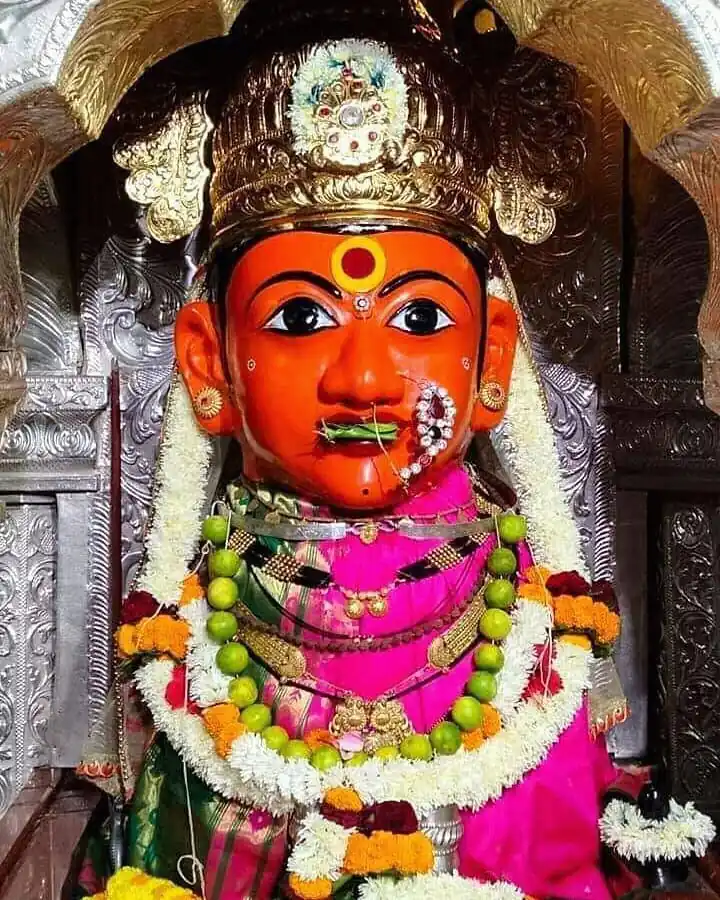
🟣 Section-by-Section Breakdown
👉 Mythological Legacy: The Tale of Renuka and Parashurama
👉 Architectural Grandeur: From Stone Steps to Copper Sanctums
👉 Historical Timeline: Ahilyabai Holkar’s Renovation & Beyond
👉 Travel Essentials: Distances, Routes, and Climatic Tips
👉 Cultural Immersion: Festivals, Markets, and Local Life
👉 Nearby Attractions: Forts, Caves, and Natural Wonders
👉 FAQs: Your Queries Answered
🟠 Detailed Section Breakdown:
⭕ Mythological Legacy: The Tale of Renuka and Parashurama
The temple’s origin is rooted in the Mahabharata-era legend of Goddess Renuka, whose devotion was tested tragically. Ordered by her husband, Sage Jamadagni, to behead her for a momentary lapse in chastity, her son Parashurama obeyed, later reviving her through divine intervention. Her head fell at Chandwad, while her body landed at Mahur, making both sites revered Shakti Peeths.
➤ Granular Detail:
➜ Symbolism: The temple’s idol is said to transform thrice daily—youthful at dawn, mature at noon, and aged by dusk—a phenomenon locals attribute to Renuka’s eternal cycle of life.
➜ Cultural Impact: The legend shapes rituals like Navratri Ghatsthapana, where thousands honour Mata Renuka’s resilience.
⭕ Architectural Grandeur: Stone, Copper, and Hidden Passages
Renovated by Queen Ahilyabai Holkar (1735–1795), the temple blends Maratha craftsmanship with spiritual symbolism:
➜ Entrance & Courtyard: A grand stone gateway marks the ascent, flanked by ancient steps and towering Deepmala lamps.
➜ Sanctum Sanctorum: The copper-carved Gabhara houses Renuka Mata’s Idol, adorned with gold masks and silver ornaments donated by the Holkar dynasty.
➜ Underground Tunnels: Folklore speaks of a secret subway linking the temple to Ahilyabai’s Rang Mahal, now sealed for safety.
➤ Interview Insight:
Local priest Shri Mohan Deshpande shares, “The temple’s Trishul and Tulsi Vrindavan symbolise Shiva-Shakti unity. Even the stones here whisper stories of Holkar’s piety”.
⭕ Historical Timeline: From Medieval Caves to Maratha Glory
➜ 11th Century: Jain caves near Chandwad hint at early spiritual activity.
➜ 1740 CE: Ahilyabai Holkar rebuilds the temple, adding Tirth-Talav (Sacred Tank) and Guesthouses.
➜ 1772 CE: Inscriptions confirm the construction of stone Dharmashalas for pilgrims.
➤ Cultural Analysis:
Chandwad’s strategic location on the Mumbai-Agra highway (NH-3) made it a hub for traders and devotees, enriching its syncretic culture.
⭕ Travel Essentials
➤ Distance from Major Cities:
➜ Mumbai: 250 km (4.5 hrs via NH-3)
➜ Pune: 220 km (4 hrs)
➜ Nashik: 65 km (1.5 hrs)
➜ Aurangabad: 150 km (3 hrs)
➤ Best Time to Visit:
➜ Monsoon (June–September): Lush greenery and cascading steps.
➜ Navratri (September–October): Vibrant processions and night illuminations.
➤ Weather:
➜ Summer: 25°C – 38°C (March–June)
➜ Winter: 10°C – 28°C (November–February)
⭕ Cultural Immersion
➤ Local Markets:
➜ Chandwad Bazaar: Handloom textiles (once thriving, now rare) and Pithla-Bhakri spices.
➜ Festive Stalls: Navratri markets sell Rahat Pak (sesame sweets) and clay idols.
➤ Food & Handicrafts:
➜ Must-Try: Puran Poli (Sweet flatbread), Kandhi Pedha and Nashik Grapes.
➜ Handicrafts: Bronze Trishul replicas and Warli paintings.
➤ Demographics:
➜ Population: ~25,341 (2025 est.)
➜ Talukas: Chandwad, Nandgaon, Malegaon
➜ Economy: Agriculture (onion, grapes), pilgrimage tourism.
⭕ Nearby Attractions
👉 Rang Mahal: Ahilyabai’s fortress with Mughal-Maratha architecture.
👉 Indrai Fort: Panoramic views of Sahyadri ranges.
👉 Jain Caves: 11th-century carvings of Tirthankara Chandraprabhu.
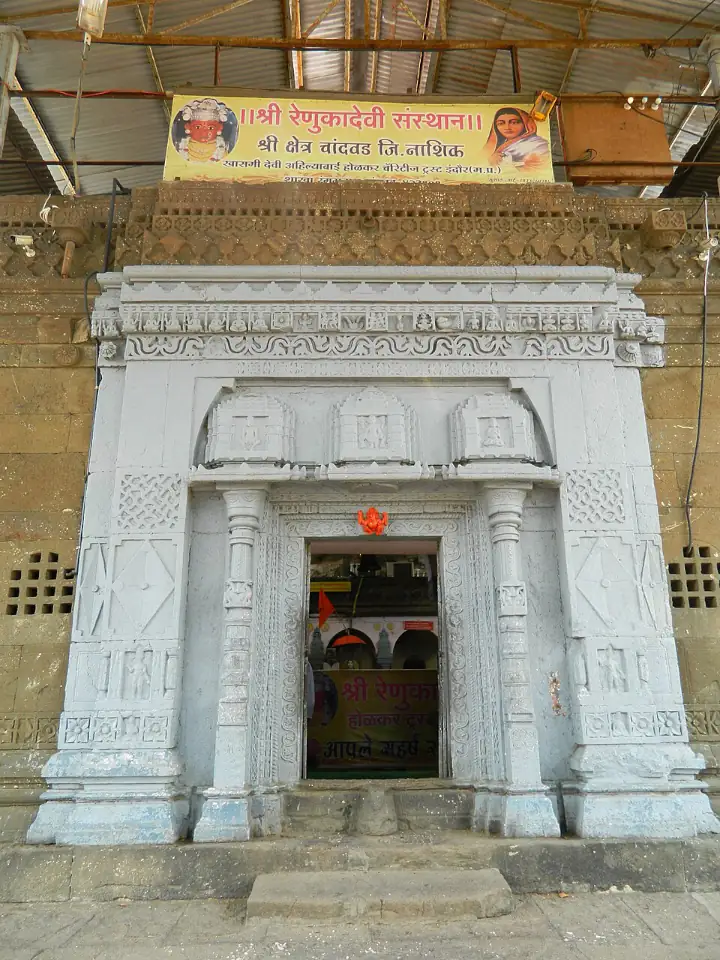
🟤 Best Places to Visit Near Renuka Mata Temple (with Granular Details)
✅︎ Rang Mahal (2 km)
➜ History: Ahilyabai Holkar’s monsoon retreat, blending Mughal arches with Maratha frescoes.
➜ Key Feature: A hidden balcony offering panoramic views of Chandwad’s skyline.
✅︎ Indrai Fort (8 km)
➜ Trek: A 1-hour climb through dense forest leads to ruins of bastions and water cisterns. Best visited at sunrise.
➜ Legend: Believed to be the site where Parashurama meditated after reviving Renuka.
✅︎ Jain Caves of Chandwad (3 km)
➜ Architecture: 11th-century rock-cut caves dedicated to Jain Tirthankaras. Notable for intricate carvings of Yakshi deities.
✅︎ Saptashrungi Gad (75 km)
➜ Spiritual Significance: A Shakti Peeth where Goddess Saptashrungi’s idol is carved into a cliff. Ideal for a day trip.
✅︎ Anandwalli Forest (15 km)
➜ Activities: Birdwatching trails and picnics by the Girna River. Local guides offer night walks to spot foxes and owls.
✅︎ Chandeshwar Temple (1 km)
➜ Unique Feature: A Shiva temple with a Nandi statue that locals believe grants wishes when whispered too.
✅︎ Malegaon (35 km)
➜ Cultural Detour: Visit the Sundar Narayan Temple and bustling Kapad Bazaar for handwoven Paithani sarees.
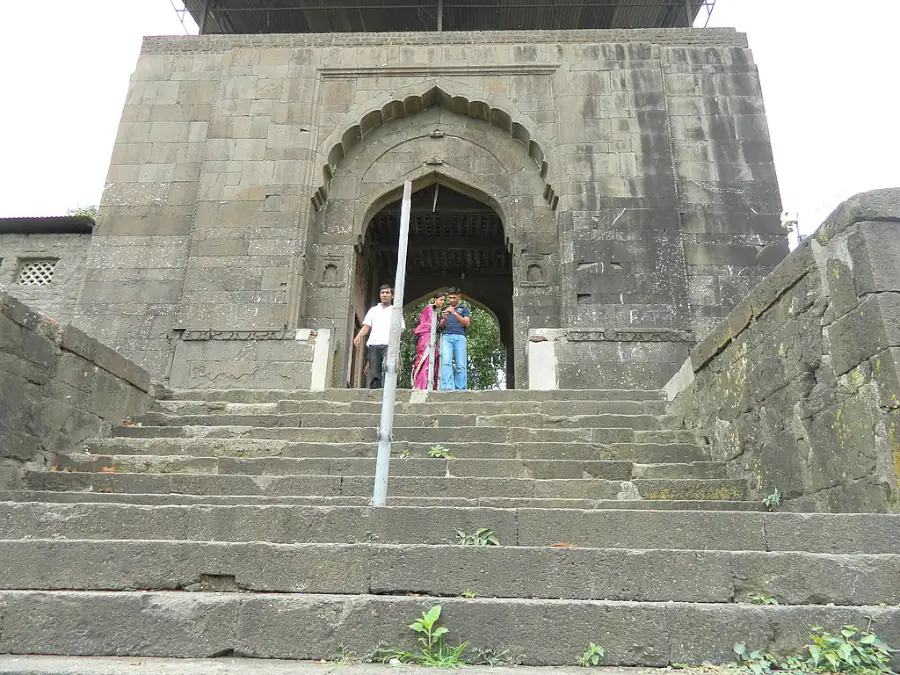
🔵 Best Places for Refreshments: Authentic Local Food
🍵 Chandwad Bazaar’s Street Stalls
✦ Specialty: Puran Poli (Sweet Lentil-stuffed Flatbread) and Pithla-Bhakri (Gram Flour Curry with Millet Bread).
✦ Must-Try Stall: Mama’s Chai Tapri near the temple entrance serves Spiced Masala Chai with crispy Vada Pav. Open from 5 AM for dawn pilgrims.
🍵 Holkar Dharmashala Mess
✦ Ambiance: A no-frills community kitchen serving Satvik (Vegetarian) meals.
✦ Menu: Varichi Bhaat (Spiced Rice with Coconut), Amti (Sour Lentil Curry), and Shrikhand (Sweet Yogurt). Meal cost: ₹50.
🍵 Hotel Renuka Prasad
✦ Location: 1 km from the temple on NH-3.
✦ Signature Dishes: Nashik Misal Pav (Spicy Sprout Curry) and Bharli Vangi (Stuffed Eggplant). Pair with Kokum Sharbat for a tangy refreshment.
🍵 Navratri Food Market
✦ Seasonal Highlight: Stalls sell Rahat Pak (Sesame-Jaggery Sweets) and Sabudana Khichdi (Tapioca Pearls) during festivals.
🍵 Shree Krishna Dhaba
✦ For Travellers: Located on the highway, this Dhaba offers hearty Thalis with Baingan Bharta and Bajra Roti. Budget-friendly at ₹120 per plate.
⛔ FAQs
Why is Renuka Mata Temple a Shakti Peeth?
It enshrines Goddess Renuka’s head, fallen during Parashurama’s act of devotion.
Are there accommodation options near the temple?
Yes! Budget Dharmashalas and Nashik’s luxury hotels cater to all.
⛔ Conclusion:
Chandwad’s Renuka Mata Temple is a spiritual odyssey through time—where mythology breathes in stone, and history echoes in every prayer. Whether you seek divine solace or cultural enrichment, this temple promises an unforgettable journey.
This guide weaves history, culture, and practicality to ensure your journey to Chandwad is as enriching as the legends it guards. 🌄✨
⛔ Sources:
➜ Wikipedia: Chandwad, Renuka Mata
➜ MyAdhyatm, Renuka Devi Trust
➜ Local narratives and Nashik Tourism Board
➜ Image Credit – Wikimedia Commons & Instagram
Plan Your Visit: Navigate Maharashtra’s spiritual heartland with our guide—where every step is a story! 🌄✨
Loved this guide? Share it with fellow travellers or tag us in your Chandwad adventures! #RenukaMataChandwad #NashikDiaries
For more information, please visit our website: ExploreXP
- Arrah, Bihar: A Comprehensive Travel and Cultural Guide
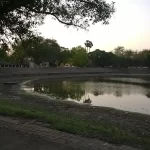
- Aranya Devi Temple – Arrah, Bihar: Where Mythology Meets Modern Devotion
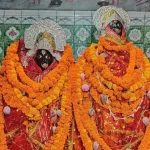
- Anjaneri Hill – Nashik, Maharashtra: Where Myth Meets Majesty
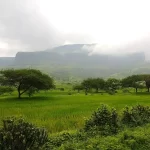
- Anand Sagar, Shegaon, Maharashtra – A Spiritual Oasis Blending Serenity & Adventure
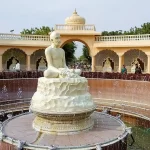
- Aga Khan Palace – Pune’s Monument of Freedom and Legacy
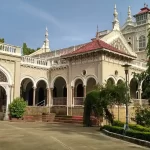
- Attari Sham Singh Railway Station – A Historic Gateway to Punjab’s Heritage

